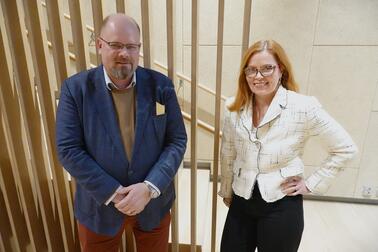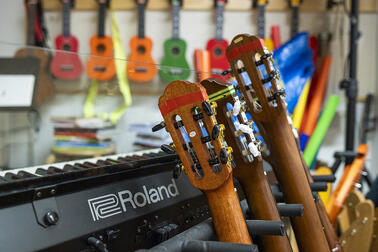
In 2020, more young people than before gained and accepted a place in further education. A positive trend could be seen compared to the previous year. This is demonstrated by the new ‘Nuorten koulutus Helsingissä’ (Education of young people in Helsinki) publication, which examines the transition of young people from comprehensive school onwards. In Helsinki, it is more common for young people to continue to upper secondary school and transition-phase education than in the rest of Finland.
Almost every 9th grade graduate in Helsinki (99%) who applied to further studies in the spring of 2020 was admitted to studies of some kind. For a small portion (1%), however, the applications fell through. In addition to this, 3% of young persons admitted to studies did not accept the places offered to them.
The majority of young people continue from comprehensive education to studies that lead to an upper secondary degree. In Helsinki, it is more common than elsewhere in the country to progress from comprehensive school to upper secondary school and various transition-phase studies, such as preparatory or additional education. Overall, the rate of immediate transitions to further education in Helsinki is slightly lower than in the entire country or other large cities. In 2019, some 5% of 9th grade graduates in Helsinki did not continue to any further studies during the same year.
There are differences in engagement in upper secondary education: it is more common among girls than boys. Furthermore, young people who speak either Finnish or Swedish proceed to upper secondary education more often than those who speak a foreign language. Within Helsinki, there are also differences in the proportion of 16–18-year-olds in upper secondary education. The difference between the districts with the highest and lowest levels of participation is 16 percentage points. The size of the gap has not decreased since the early 2010s. There is also a great deal of variation between parts of Helsinki in terms of whether young people choose upper secondary school or vocational education.
The transition from comprehensive education is not always straightforward for everyone
A small portion of young people are left without a place to study immediately after comprehensive school. Some 6% of young people also end up dropping out of upper secondary education and being excluded from education altogether. A small group, roughly 2%, quit their studies almost immediately after beginning them. Dropping out is more than two times more common in vocational education than in upper secondary school, which students mostly tend to complete. In terms of long-term developments, drop rates for upper secondary studies have decreased significantly and the number of completions has increased. In recent years, however, the proportions have remained largely stable.
The information presented in the publication is largely from the year 2019 and 2020. The results of the coronavirus pandemic on the well-being and study progress of young people are not yet represented by the available statistics. It is possible that the coronavirus outbreak will widen the existing gaps.
As a significant upcoming reform, the leaving age for compulsory education will be extended to 18 as of August 2021. The reform will initially affect the age group that will be completing comprehensive education this spring. The goal is for every young person to complete upper secondary education in years to come.
Read more:
Statistical publication ‘Nuorten koulutus Helsingissä – siirtymä peruskoulusta eteenpäin' (In Finnish))
Photo: Kimmo Brandt, City of Helsinki Media Bank.


